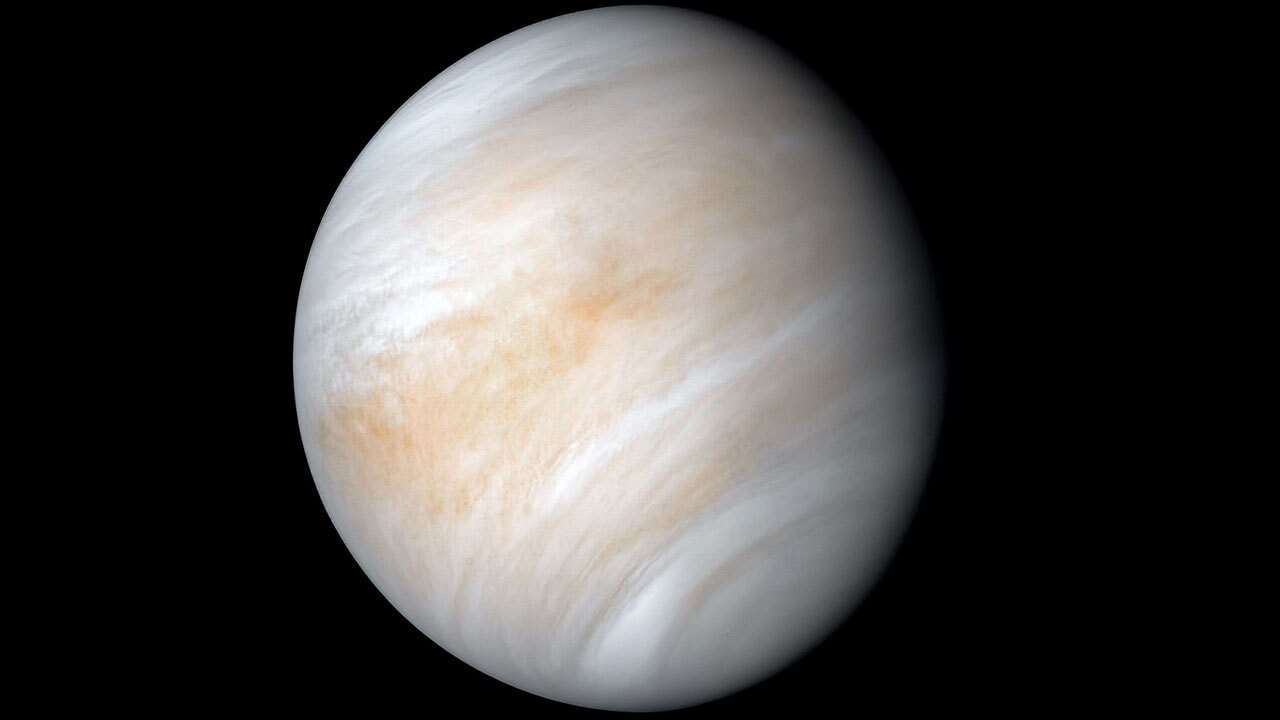Create a free profile to get unlimited access to exclusive videos, sweepstakes, and more!
Venus sounds like the last place for life, but…could photosynthesis happen in its clouds?

Raging with unbearable heat and covered in swirls of toxic clouds, Venus is a hell world for humans. But something might actually be able to live in its atmosphere.
The clouds of sulfuric acid above Venus could — at least hypothetically — be a haven for photosynthesis. No alien algae or other photosynthetic organisms have actually been found there yet, but biochemist Rakesh Mogul of California State Polytechnic University recently led a study, published in Astrobiology, about how this could happen. What is poison for one life-form could make it possible for another to survive.
Venus is a place where even spacecraft fear to tread. Every lander that has touched the radiation-blasted surface has met an untimely death. Far above that surface, its skies might have some hidden advantages for hypothetical phototrophs, organisms that use light as an energy source to power up their metabolisms.
“We found that several packets of wavelengths, which pass through Venus’ atmosphere, overlap with the absorption properties of many terrestrial photosynthetic pigments,” he tells SYFY WIRE. “The light that remains in the clouds represents the groups of wavelengths available for photosynthesis.”
Phycocyanin, which gives cyanobacteria (aka blue-green algae) its unearthly blue color, could possibly thrive in the Venusian clouds, since it can absorb the wavelengths of light that come through. These wavelengths are similar to those that can be absorbed by photosynthetic organisms on Earth. (Some people swear by it as a supplement. No, really.) So could bacteriochlorophyll b, which offers an assist to organisms that photosynthesize wavelengths of light that most plants and cyanobacteria cannot use. These phototropic bacteria do not release oxygen as a by-product of photosynthesis.
Searching for extraterrestrial life means recognizing substances and processes close to those on our planet while also being prepared to find life as we don’t know it or don’t usually recognize it. After light scatters through Earth’s atmosphere, what is available for photosynthesis remains on the surface as opposed to the leftovers lingering in the clouds of Venus. However, heat from the infernal surface of Venus rises up to the atmosphere. Both that and heat in the atmosphere itself include photons whose wavelengths are an asset to some photosynthetic pigments.
While that might sound conducive to something like algae or phytoplankton thriving, how could they make it in noxious clouds of sulfur dioxide that are constantly irradiated by the Sun?
“The clouds in Venus have substantial abundances of sulfur dioxide and other unidentified chemical species that absorb and scatter UV and visible radiation, scrubbing the atmosphere of most of the harmful UV rays,” Mogul says.
What results from this is ammonium bisulfate and other neutralized forms of sulfuric acid that were observed to show higher water activity than what was previously assumed. This is because of molecular properties that have certain effects on water molecules. Sulfuric acid is something of a double agent before it is neutralized, because while it reacts with H2O, it also sticks to it, making less water available for living things. Ammonium bisulfate, which is also less acidic, doesn’t stick nearly as well, freeing up that water for other types of chemical reactions.
So much for the clouds of Venus being supposedly too dry and acidic to support anything that would need water to stay alive.
Even more amazing is that photosynthesis could even be possible at night on Venus. It already happens in environments with hardly any light on Earth, such as hydrothermal vents at the bottom of the ocean. The photon fluxes on Venus were found to be much higher than those on Earth. Meaning, heat and light do not scatter and vanish as quickly in the gases of the Venusian atmosphere as they do in water. Light energy in thermal or infrared forms, possibly both, rises from the surface and is retained in the clouds. Phototrophs would never want for photons.
“Venus’ surface is just so hot that a major amount of thermal radiation is given off, this makes the atmosphere hot,” Mogul says. “Together, the surface and atmosphere release photons of light due to the heat, which then rise into the clouds.”
Whether there are alien things swarming in the clouds of Venus is still unknown, but if something like that is ever discovered, the find shouldn’t be completely unexpected.














